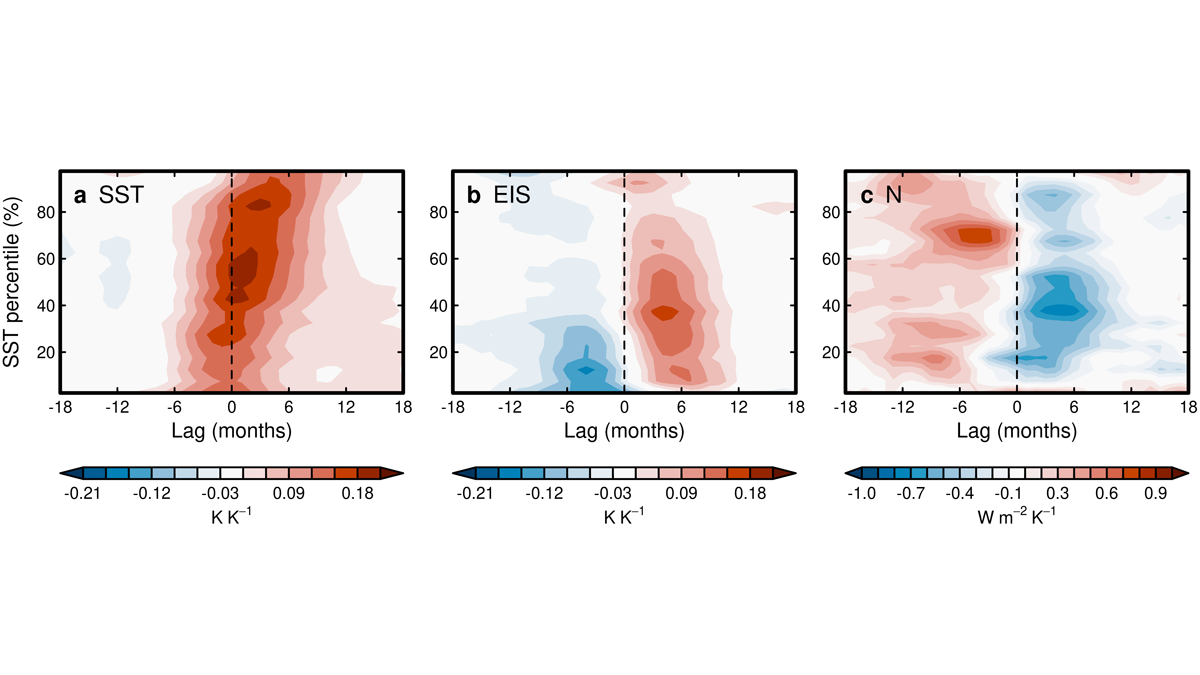Editors’ Highlights are summaries of recent papers by AGU’s journal editors.
Source: Geophysical Research Letters
Projections of climate change are dependent on the Earth’s radiation budget. In order to better understand the variability of the Earth’s radiation in interannual time-scales, Ceppi & Fueglistaler [2021] examined the relationship between radiation and the El Niño-Southern Oscillation (ENSO), which is the dominant mode of variability on these time-scales and is characterized by large changes in sea surface temperature (SST).
They show that changes in the SST affect the atmospheric temperature, which influences the amount of low clouds present leading to changes in the tropical radiation budget. Their results suggest a two-way coupling between the ENSO SST changes and radiation, which has important implications for long-term climate projections, in particular, the impact of model biases in cloud representation on these projections.
Citation: Ceppi, P., & Fueglistaler, S. [2021]. The El Niño–Southern Oscillation pattern effect. Geophysical Research Letters, 48, e2021GL095261. https://doi.org/10.1029/2021GL095261
―Suzana Camargo, Editor, Geophysical Research Letters

